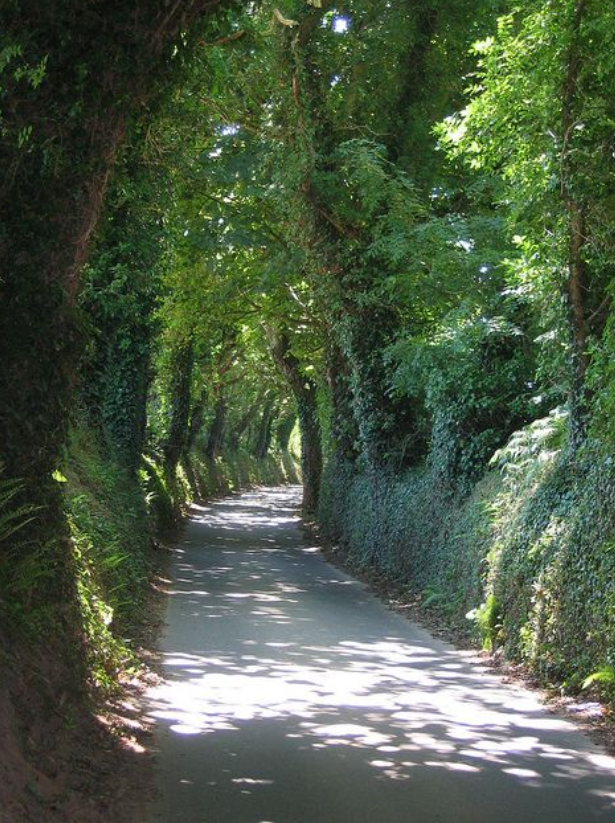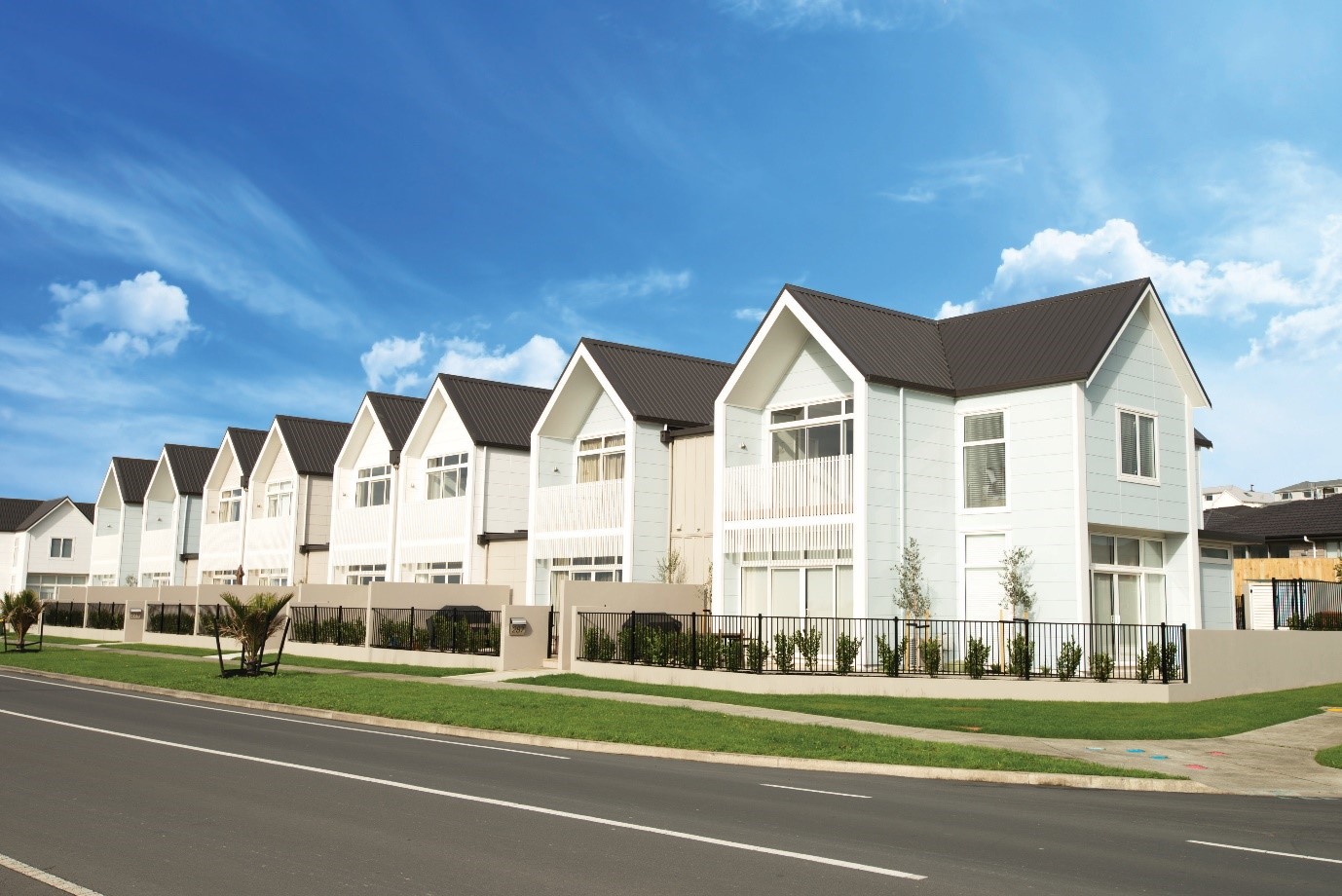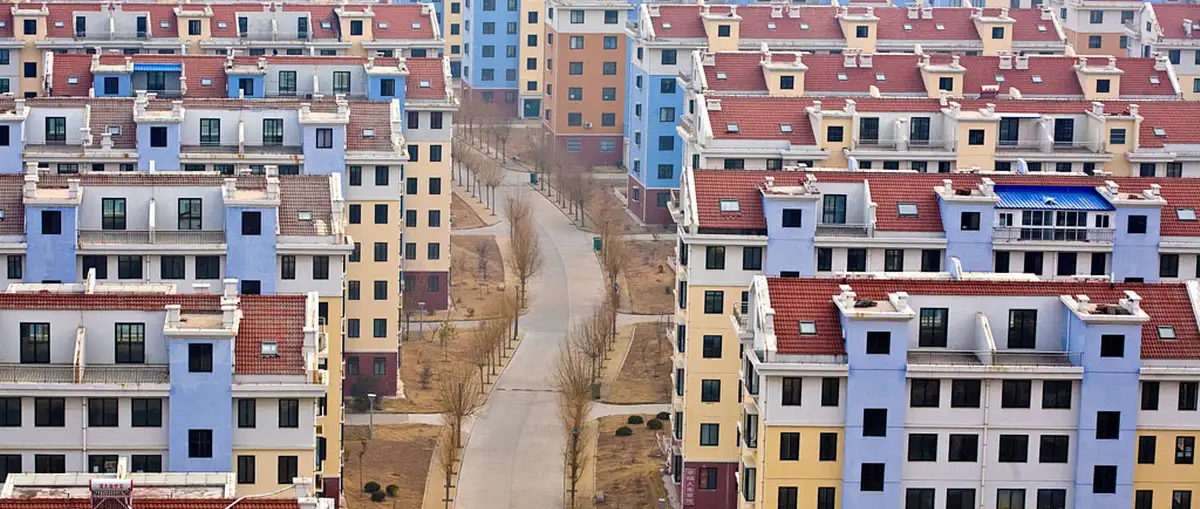
Almost no one is evil. Almost everything is broken.
I like wide avenues. Footpaths on each side, grass berms, trees, and more than enough space for two cars to pass.
When I lived in Jersey, this was something I missed. In fact, my introduction to the roads there was anxiety, then the need to replace a smashed car door, and eventually ongoing frustration.
Many of the roads across the island are simply not wide enough for two cars to pass. On a densely populated island, you inevitably find yourself negotiating from car to car on who will pass, who will wait in a bay (if available), and who will have to reverse.

Source: Pinterest
People are mainly polite. But I did hear about instances of ‘lane rage’, where there were standoffs on who would reverse. Sometimes the winner came down to appetite for aggression or size of vehicle.
It occurred to me that, following years of population growth, the roading system there was broken.
It wouldn’t have taken much to widen key arterial lanes or even add a new road or two. But there didn’t seem to be any willingness to change the status quo.
I have a deep annoyance with broken systems. Especially when, with the right settings, they could be fixed.
Critical thinking can help a lot. Focus on improving every aspect of what you can control. Leave what you can’t.
Indeed, it gives purpose to focus energy on making those things you can a bit better every day. To find good opportunities. To generate more wealth and income for our clients. To improve life.
So, there’s nothing more aggravating when you come across a situation where those trying to fix broken systems are hamstrung.
New Zealand’s broken property market
There is a shortage of accommodation in New Zealand. Housing is too expensive, with mortgages or rents taking up too much of people’s income.
I would suggest this is the number one economic problem this country faces.
It operates as a hurdle on the young. Because home prices are up to 11x the median household income, many are compelled to live in a financial straitjacket — or leave the country. This fuels a brain drain. It dampens consumption in other areas across the economy, with rent and mortgages devouring too big a slice of income.
At the 2018 census, the home ownership rate was 64.5%, with 35.5% of households renting. Of all households, 33.1% have a mortgage.
Some households may be renting, while having a mortgage on a home they are not living in. But for the most part, close to half of owned homes have a mortgage. Or almost 70% of households are paying either a mortgage or rent.
There are around 1.26 million outstanding mortgages in New Zealand. Over 50% of these mortgages are due to re-fix their rate between July 2023 to July 2024. The most popular fixed periods are 1-year, then 2-year terms.
This would imply that between now and the middle of next year, some 630,000 mortgage-holders could see their financing costs double.
Well, the government has tried altering all settings in an attempt to achieve more affordable home prices and rents:
- Instructed RBNZ to consider sustainable home prices.
- Foreign buyer ban.
- 10-year bright line test (capital gains tax) on sale within this time.
- Removed interest deductibility for landlords.
- Restrictions on landlords increasing rents or evicting tenants.
When adjusted for inflation, homes are still about as unaffordable as they were before all these changes.
That is probably due to the fact that regulating existing supply is a zero-sum game.
In any market, where demand exceeds supply, prices escalate.
The key is to increase supply
It is in this area where we have failed to zone enough sections, connect infrastructure, and build enough homes.
So, the other week, I spent an hour having coffee with a property developer in North Auckland.
He has built hundreds of homes. And is now trying to develop an apartment building and terrace home development.

Artist’s impression of terrace homes in Auckland. Source: Eboss
What he told me was shocking.
He used to be able to build a typical 3-bedroom home in around 11 weeks. It’s now taking him up to a year.
Worse, he’s finding that obtaining consents, permits, riding out delays. And dealing with local government has brought his business to a standstill.
In his view, councils have become a law unto themselves. Planning departments, he said, are filled with ‘indoctrinated people’ looking at why developments should not proceed.
Meanwhile, I recall a friend who built a 50sqm sleepout in his backyard in Auckland. His consents cost him over $20,000. The council claimed that further measures were needed, since the area could experience ‘high wind’.
However, his brother in Scandinavia built an entire family home with council consents for less than $8,000.
Clearly, the systems of zoning land, building infrastructure, and consenting the development of homes in New Zealand is broken.
Broken and suspended in bureaucratic malaise.
Yet, beyond all the other issues we face, housing should remain front and centre.
Like the narrow roads of Jersey, New Zealand’s system of rolling out new homes is broken.
It needs to be fixed. Widened. And made to work.
Now, you may say that unaffordable housing has become a global problem. It’s a problem in Australia and the UK. And since the pandemic, the US also finds itself short of around 3.8 million homes.
Yet the interesting thing with the US is that the market is flexing back.
While the supply of existing homes has fallen 19% as homeowners avoid breaking their multi-year mortgage deals, the supply of new homes has increased around 24%.
There are some large home builders listed on American stock exchanges. The market is flexing in states where local government is encouraging development. That is creating more affordable options for home buyers. And opportunities for investors.
Here in New Zealand, a great reset needs to happen.
In the 1970s we built many more homes per head of population. Compared with today, home prices were as affordable as milk. I grew up in a 1970s-built home.

Churton Park subdivision, Wellington, 1970s. Source: Archives NZ / R Coad
It may be that we can open this bottle again by dealing with the strangulation of zoning and council red tape.
Prices are a function of supply and demand. Regulating existing supply without increasing new supply seldom leads to affordability.
A very different broken property market
I had dinner a few days later with a friend recently returned from three weeks in China.
There, the situation is entirely different.
Over Italian food, he told me about blocks and blocks of apartment buildings he saw empty. No washing hanging in the windows. No lights on at night.
To his shock, he learnt they were slated for demolition.

Highest vacancy rate in the world: 22% of China’s housing stock is vacant.
Source: All That’s Interesting
Why? Property sales have fallen 30%. The home ownership rate exceeds 90%.
Economic confidence is anchored in property values. The demolition of unsold units helps stop prices from collapsing.
With memories of poverty and famine, the Chinese are savers. They perceive property as safe. Many Chinese own more than one home. Apparently, there now is enough vacant apartment space to house most of the US population.
With property representing up to a third of GDP, this scenario now presents a broken road that is crumbling away their prospects for economic growth.
China is now set to export deflation. Their problems are quite the opposite of ours’ when it comes to housing. Yet their property market is equally broken.
Central planning has produced too many homes based on too much debt.
Meanwhile, we’ve produced too little homes that are generating too much debt to buy them.
Both instances are a case of a failure to get the settings right. One road is too wide. It is coming apart. The other too narrow, it’s squeezing everyone.
China has over-planned and over-delivered to the detriment of their market, causing colossal waste.
However, we have under-planned and over-regulated, to the detriment of our property market, causing terrible unaffordability and all the problems that go with that.
We need to resolve our broken property market.
As for investors, they may be better off to look at markets that are less broken.
This is why I like listed share markets around the world. Do your homework and you can find opportunities at value that can produce good income (dividends) and growth potential.
Buy the right assets at the right time when fear is overstated and you could position yourself for success.
Every week in our Quantum Wealth Report, we focus on the opportunities and developments we are seeing. I encourage you to access this reporting now with a premium news subscription.
Subscribe today and you’ll receive 2 free reports on passive income and NZX investing.
Your first Quantum Wealth Report is waiting for you:

 Start Your Subscription: NZ$37.00 / monthly
Start Your Subscription: NZ$37.00 / monthly

 Start Your Subscription: US$24.00 / monthly
Start Your Subscription: US$24.00 / monthly
 EXCLUSIVE BONUS: You’ll also receive these additional eBook reports,
EXCLUSIVE BONUS: You’ll also receive these additional eBook reports,
covering 13 NZX stocks, plus 2 global opportunities:
Regards,
Simon Angelo
Editor, Wealth Morning
(This article is the editorial content of this periodical. It is the author’s personal opinion and commentary. It is general in nature and should not be construed as any financial or investment advice.)
The post Our Broken Market: Fixing NZ’s Property Crisis appeared first on Global Opportunities Beyond the Radar.






